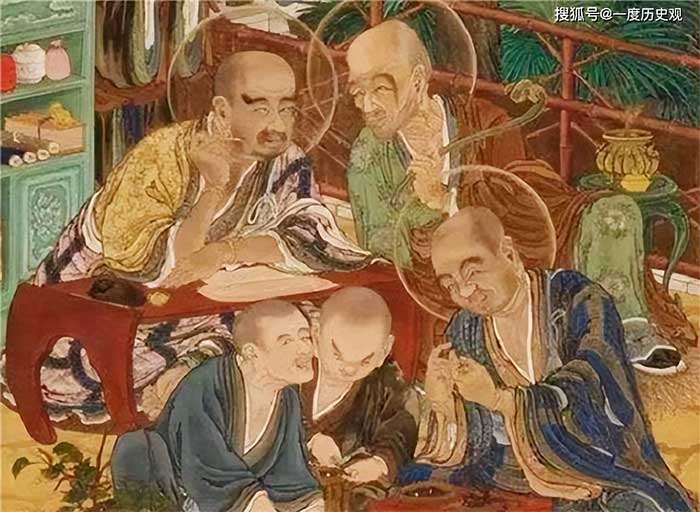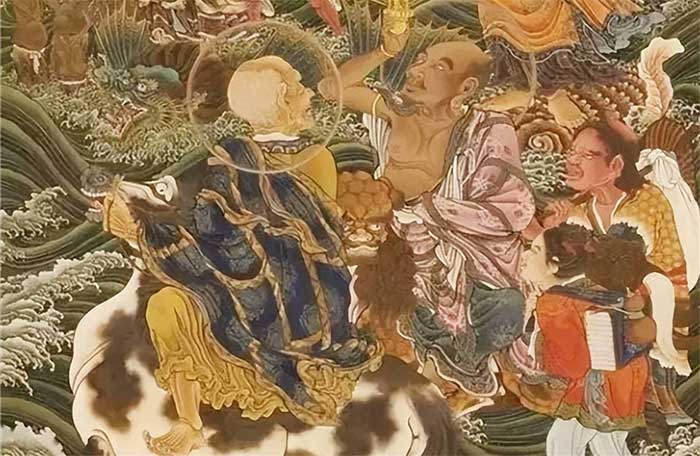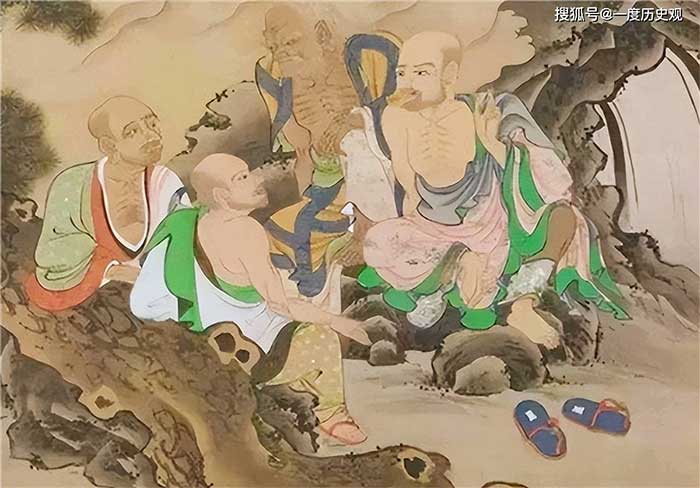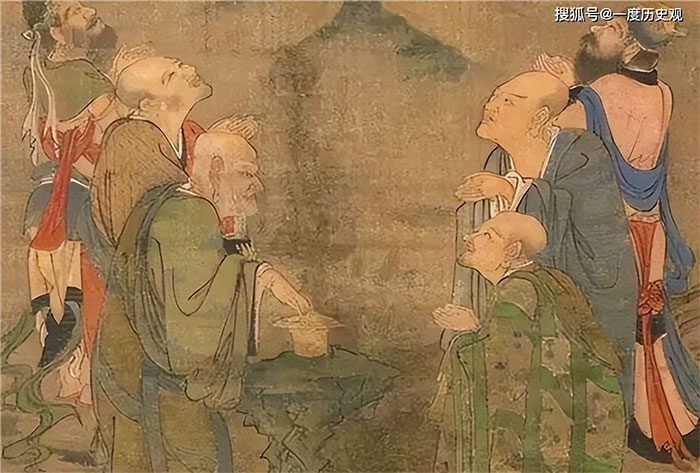When magnifying the ancient painting, a small detail prompted experts to delve into the annals of history for answers.
“Five Hundred Arhats” (Translation: Painting of 500 Arhats) is a collection of paintings completed by two renowned painters of the Southern Song Dynasty, Zhao Qichang and Lin Dingkui. This work is emblematic of Buddhist culture in the Zhèdōng area, Ningbo, China.
The total number of paintings is identified to exceed 100, primarily created using woodblock printing techniques with gold powder as the main material. The paintings are arranged in a specific order, creating a complete and interconnected collection.


Paintings from the ‘Five Hundred Arhats’ collection. (Image: Sohu).
The collection includes paintings depicting historical events in Buddhism, featuring classical stories and the lives of monks. Interwoven within are glimpses of daily life during that era. The collection has attracted the interest of numerous collectors and appraisal experts. During their research, experts discovered many intriguing details in the paintings.
Specifically, when magnifying one of the paintings by 30 times, it was noted that alongside the Arhats, there appeared to be a pair of sandals resembling modern flip-flops. While this is a common item in contemporary life, was its presence logical over 1,000 years ago?

The sandals appearing in the over 1,000-year-old painting. (Image: Sohu).
Historical documents record that the most widely used footwear during the Song Dynasty was closed-toe cloth shoes. This information sparked lively discussions about the appearance of the unusual sandals. Some suggested it was an artistic mistake, while others speculated that this detail stemmed from the author’s imagination, or even further, that the author had… time-traveled to discover modern flip-flops.

The type of shoe commonly used during the Song Dynasty. (Source: Baidu).
However, the truth is much simpler.
In China, many believe that flip-flops began to be used during the Republic of China era, but in reality, they had existed long before this, known as wooden clogs. The earliest records of wooden clogs in China date back to the Han Dynasty under Emperor Wu. In the “Records of the Supernatural,” it is noted: “In ancient times, clogs were made, with women wearing round-toed ones and men wearing square-toed ones,” indicating the differing shapes of clogs for men and women.
During the Southern Song Dynasty, wooden clogs were also frequently used by monks due to their convenience, comfort, and foot protection. It is said that a monk wearing these sandals produced a sound like “clack clack,” similar to the sound of a wooden fish drum, thus making this type of sandal a symbol of monks at that time.

The familiar flip-flops appear in many other paintings. (Image: Sohu).
By the Qing Dynasty, the practice of foot-binding became prevalent, leading to a decline in the use of wooden clogs. This has caused later generations to mistakenly believe that sandals with toe straps only originated from the Republic of China onwards. These artistic works have successfully reflected the true image of life, serving as a valuable resource for future generations to study all aspects of history from thousands of years ago.


















































